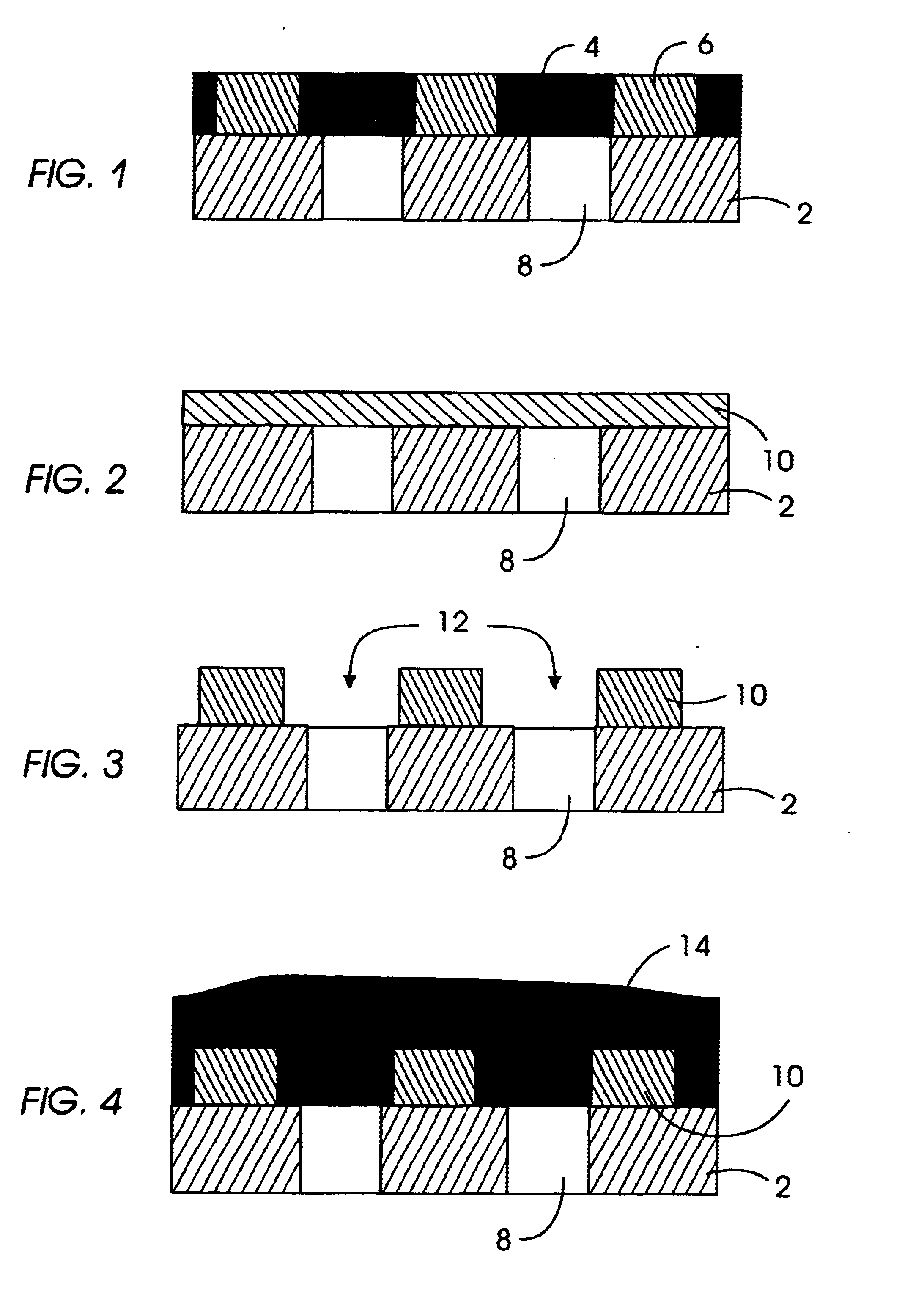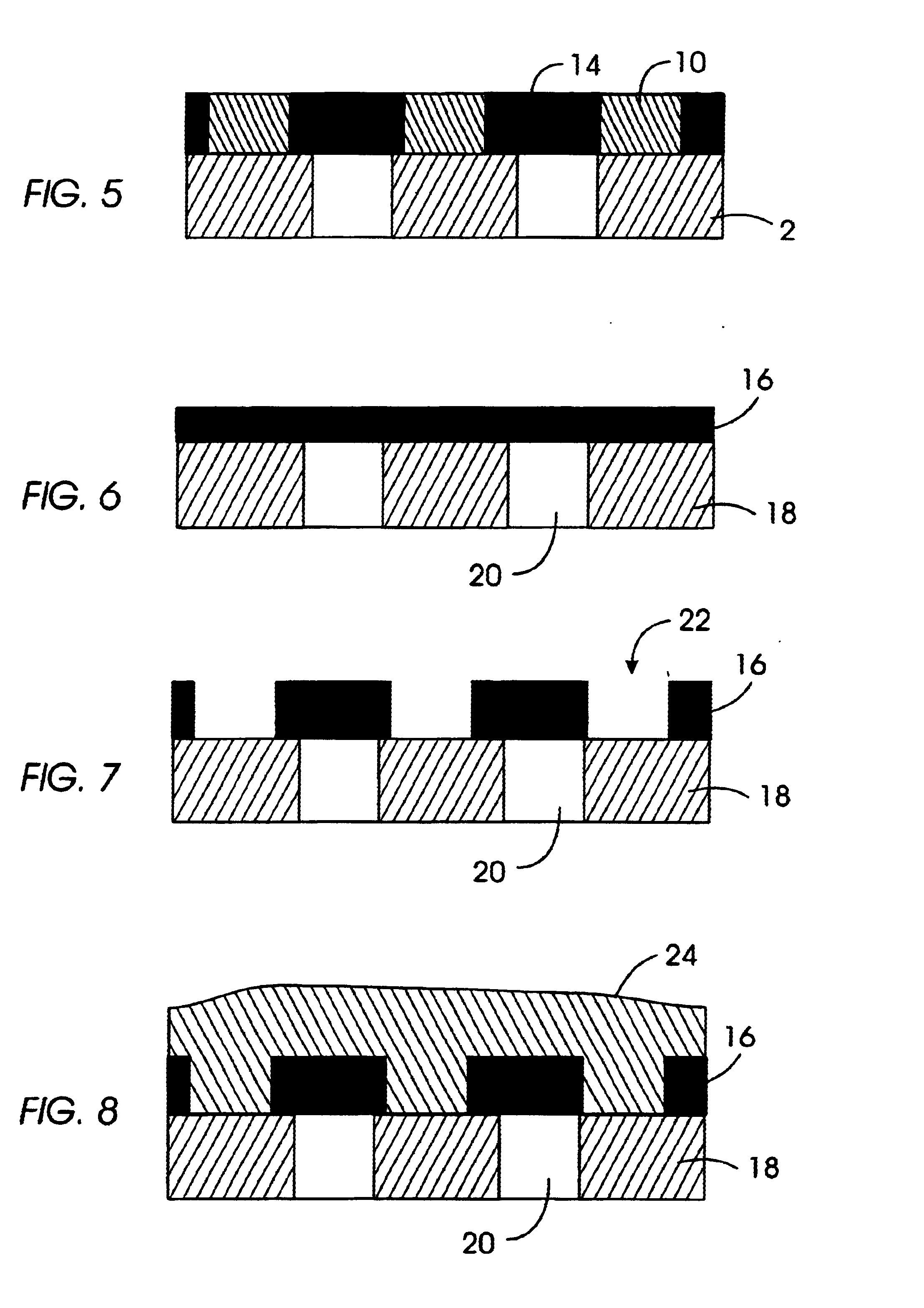Preparation of crosslinked particles from polymers having activatible crosslinking groups
a crosslinking group and polymer technology, applied in the field of nanoparticle preparation, can solve the problems of inability to realize the ultimate goal of collapsing a single linear chain to give a single nanoparticle, process problems continue to be difficult to solve, and achieve the effect of preventing intermolecular crosslinking
- Summary
- Abstract
- Description
- Claims
- Application Information
AI Technical Summary
Benefits of technology
Problems solved by technology
Method used
Image
Examples
example 1
Synthesis of the 4-Vinyl-Benzocyclobutene Monomer (3)
[0090]
4-Formaldehyde-Benzocylobutene (2)
[0091]To a 500 ml flask was added 50 ml dry THF and 2.88 g (120 mmol) Mg turnings with 4 drops of dibromoethane. The reaction mixture was then heated under reflux for 15 min, 20 g (108 mmol) of 4-bromobenzocyclobutene (1) diluted in 25 ml THF was added via dropping funnel to the Grignard reagent. After addition and rinsing the dropping funnel with 25 ml of dry THF, the reaction mixture was heated for an additional 45 min under reflux to give a green brown solution. The reaction mixture was allowed to cool to RT and then cooled down to 0° C., 15 ml (210 mmol) of DMF was added dropwise to the solution and the reaction mixture was heated under reflux for another 15 min. The reaction mixture was poured onto 150 g of ice, acidified to pH=4 and neutralized with sat. NaHCO3 solution. The crude product was extracted with ethyl acetate, the organic phase was filtered over celite and evaporation of th...
example 2
Polymers for Nanoparticle Formation
[0095]Random copolymer of Vinyl-Benzocyclobutene with Styrene (90% Styrene / 10% BCB (60 K))
[0096]The alkoxyamine initiator (4) was dissolved in 540 equivalents of styrene and 60 equivalents of Compound 3 in a glass ampule with a stir bar. After 3 freeze and thaw cycles the ampule was sealed under argon and heated for 9 hours at 125° C. The resulting polymer was dissolved in DCM and purified by precipitation into MeOH to give a colorless powder, Mn=57,000; PD=1.10.
[0097]1H-NMR (250 MHz, CDCl3): 7.24-6.57 (m, 45H, ArH), 3.05 (bs, 4H, CH2), 1.83-1.26 (m, 39H, CH2, CH).
Random copolymer of Vinyl-Benzocyclobutene with Styrene (95% Styrene / 5% BCB (80 K))
[0098]Following a procedure similar to that described above for the 90% Styrene / 10% BCB polymer, the instant synthesis (Scheme 2)(provided a 95:5 styrene / BCB random copolymer (Mw=80,000; PD=1.11) (6).
Block copolymer of Vinyl-Benzocyclobutene with Styrene using PEG-Initiator (5) (90% Styrene / 10% BCB / 10% PE...
example 3
General Procedure for Nanoparticle Formation
[0103]The following outlines the general procedure for the intramolecular crosslinking reaction that provides the nanoparticles of the invention.
[0104]20 ml of benzyl ether was heated to 250° C. in a 500 ml 3-necked flask equipped with a internal thermometer, condenser and septum. A solution of the desired benzocyclobutene functionalized linear polymer, dissolved in benzyl ether (40 ml) (1-10 wt % depending on the amount of crosslinking groups), was added via syringe pump at approximately 12.8 ml / hr with vigorously stirring under argon. After addition the solvent was distilled under reduced pressure and the remaining crude product was precipitated into MeOH. The colorless precipitate was filtered off and dried under vacuum.
[0105]1H-NMR (250 MHz, CDCl3): The significant change is the disappearance of the benzocylobutene protons at 3.05 on formation of the crosslinked particles.
PUM
| Property | Measurement | Unit |
|---|---|---|
| Diameter | aaaaa | aaaaa |
| Diameter | aaaaa | aaaaa |
| Nanoscale particle size | aaaaa | aaaaa |
Abstract
Description
Claims
Application Information
 Login to View More
Login to View More - R&D
- Intellectual Property
- Life Sciences
- Materials
- Tech Scout
- Unparalleled Data Quality
- Higher Quality Content
- 60% Fewer Hallucinations
Browse by: Latest US Patents, China's latest patents, Technical Efficacy Thesaurus, Application Domain, Technology Topic, Popular Technical Reports.
© 2025 PatSnap. All rights reserved.Legal|Privacy policy|Modern Slavery Act Transparency Statement|Sitemap|About US| Contact US: help@patsnap.com



